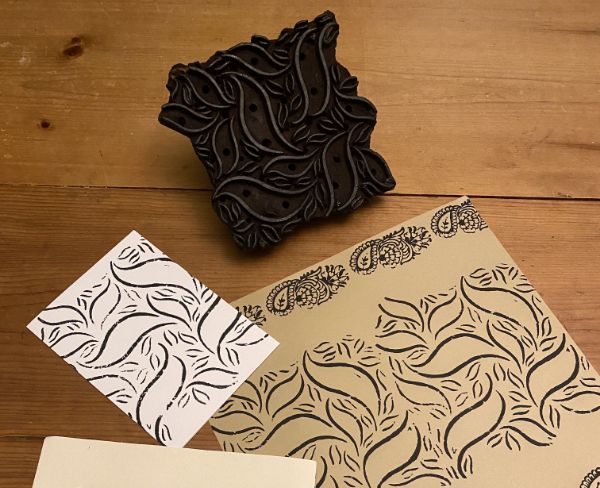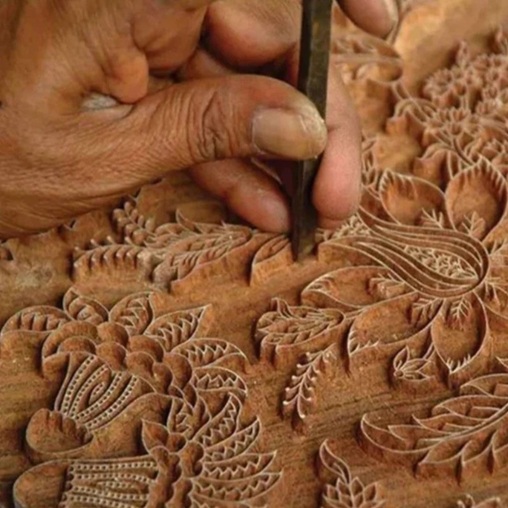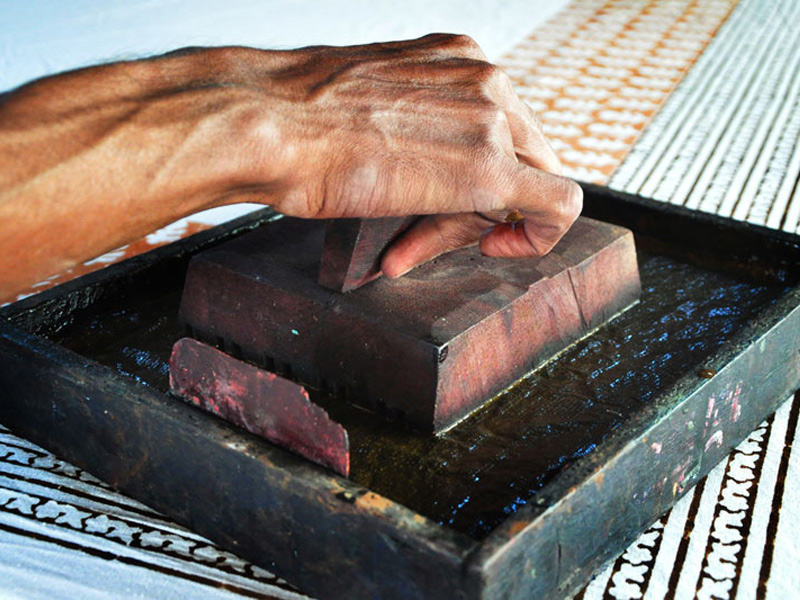Block printing is a printing technique in which an image or design is first created on paper and then engraved on a block and pressed onto a cloth or paper. It is also known as relief printing.
Woodblock Carving for a Block Print
Carving the outline block is the most challenging step in the process of block printing. As the skeleton of the design, it is the most expensive block. The most skilled artisan (often the owner) in the block-making shop works on this piece. The work begins with a freehand paper drawing of the outline of the design. Using the drawing as a map, the artisan traces the coloring blocks Block carving is tedious and requires exceptional craftsmanship. Craftsmen trace the design onto a flat piece of sheesham wood, the best wood for this type of printmaking, and chisel it 1/3-inch deep.
The number of blocks needed to make a print depends on the design. Each color and design may require a different number of blocks. A simple design may require only three blocks, and a complex design may require as many as 30 blocks.
Creating colors for Woodblock Printing
The wood printing process is only aided by intuition and experience. The color master prepares his color recipe by looking at the paint shades. After mixing and testing the colors, it is time to prepare the dye pad.
A dye pad consists of a rectangular wooden tray, to which a metal frame is attached with yards of nylon rope. (The taut rope mesh provides a spring effect during printing.) Several layers of coarse sacking material are stacked on top of the rope mesh. The final layers are pieces of fine fabrics such as silk, chiffon, or voile. The choice of the final layer depends on the dye saturation required for printing. After this, we put the dye in the pad and mix the surface of the dye pad
with a piece of wood. After this, we put the wooden blocks in color-wise carts and arrange them in the order of printing.
Block Printing on fabric: Preparation
Uniqueness. Each print has the slightest variation of handmade craftsmanship – a touch that no machine can replicate. Every motif has a soul. Every piece is one of a kind.
At Varsha Yogi Studio, we respect this heritage technique not only for its beauty but also for its cultural and artistic depth. Our designs often blend traditional Indian elements with a contemporary color palette, breathing new life into a centuries-old art form.
To prepare the fabric for block printing, it needs to be pre-washed to remove sizing and impurities, then ironed for a smooth surface. Common fabrics used include cotton, silk, and wool. The fabric is then stretched and pinned to the printing table, and the desired printing areas can be marked with chalk.

Here’s a more detailed look at the preparation process
1. Pre-washing
Purpose: Removes any sizing or treatments from the fabric that might interfere with the printing process.
Process: Wash the fabric thoroughly, ensuring it’s clean and free of any residue.
2. Ironing
Purpose: Creates a smooth, wrinkle-free surface for printing.
Purpose: Iron the fabric well, removing any folds or creases.
3. Attaching to a printing table
Purpose: Provides a stable, flat surface for printing.
Purpose: Stretch the fabric tightly over a printing table and secure it with pins.
4. Marking printing areas
Purpose: Helps with alignment and ensures consistent patterns.
Purpose: If needed, lightly mark the areas where you want to print with chalk or another suitable marking tool.
The Block Printing Technique
The process involves careful carving of the design, application of color, and precise stamping for a unique and artistic result. Before using any color blocks, artisans print the outline of the design. The block printer dips the outline block into a dye pad and moves it down the length of the table.
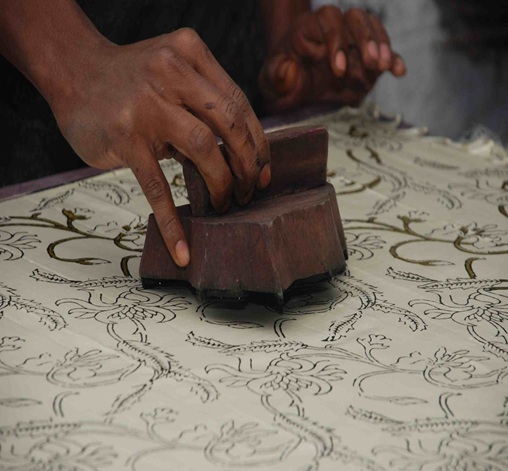
He carefully places the block on the fabric and then strikes it with the heel of his hand. The block carver chisels out registration points on the outline block, which help align the remaining blocks.
The printer’s hands are his only tool here. These registration marks on block-printed fabrics help distinguish them from mass-produced textiles that are often sold under the guise of hand-made block prints. A close inspection reveals the registration marks, which all authentic block-printed textiles have.
The most experienced printer prints the outline because it provides the framework for the design. After printing the outline, he fills in the remaining colors and reinstalls the block printing fabric.
Finishing Touches
Most printing houses have a flat roof over their studios, on which the woodblock prints are left in the sun for a few days to set the pigments.
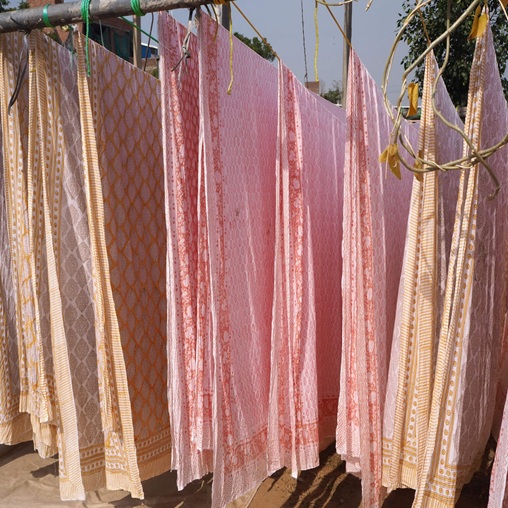
You’re not just buying fabric when you choose a block-printed textile. You’re preserving a heritage, supporting a community, and embracing the beauty of slow making.


